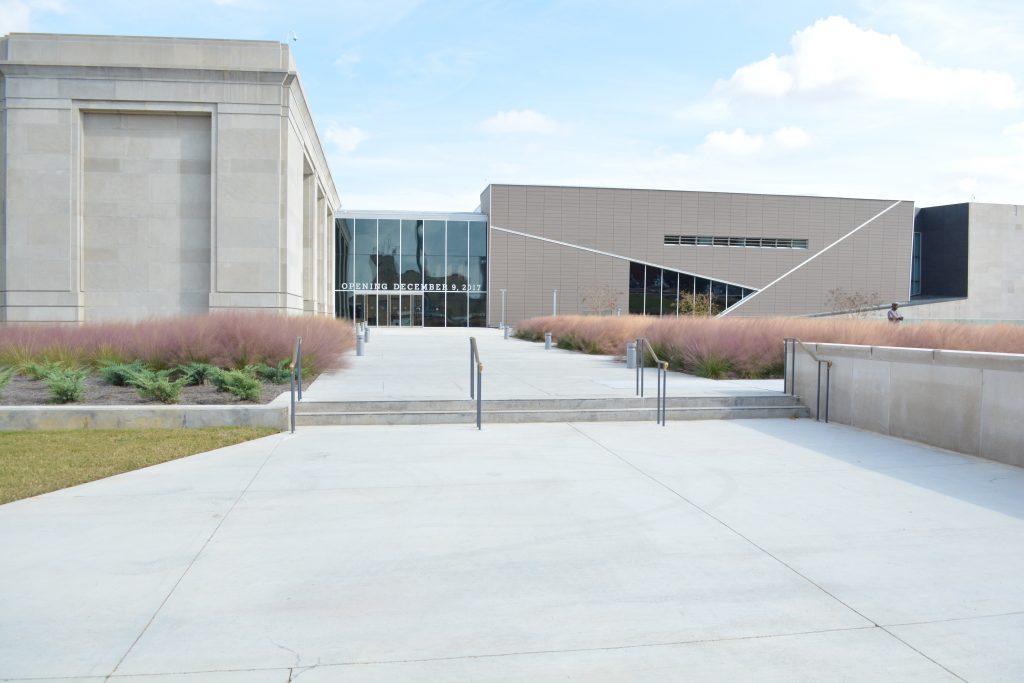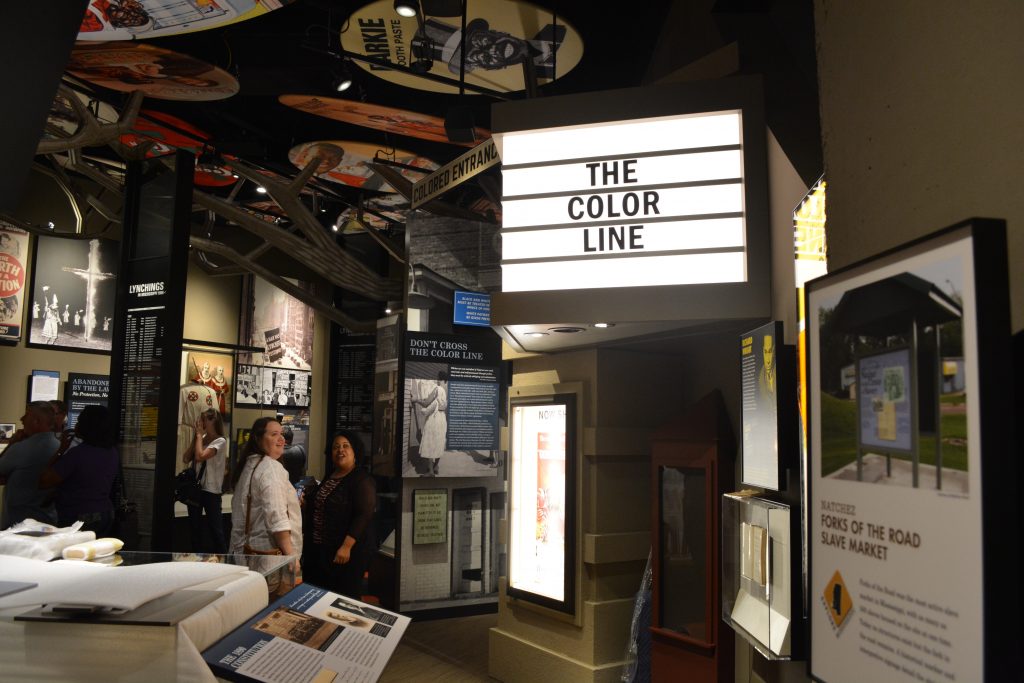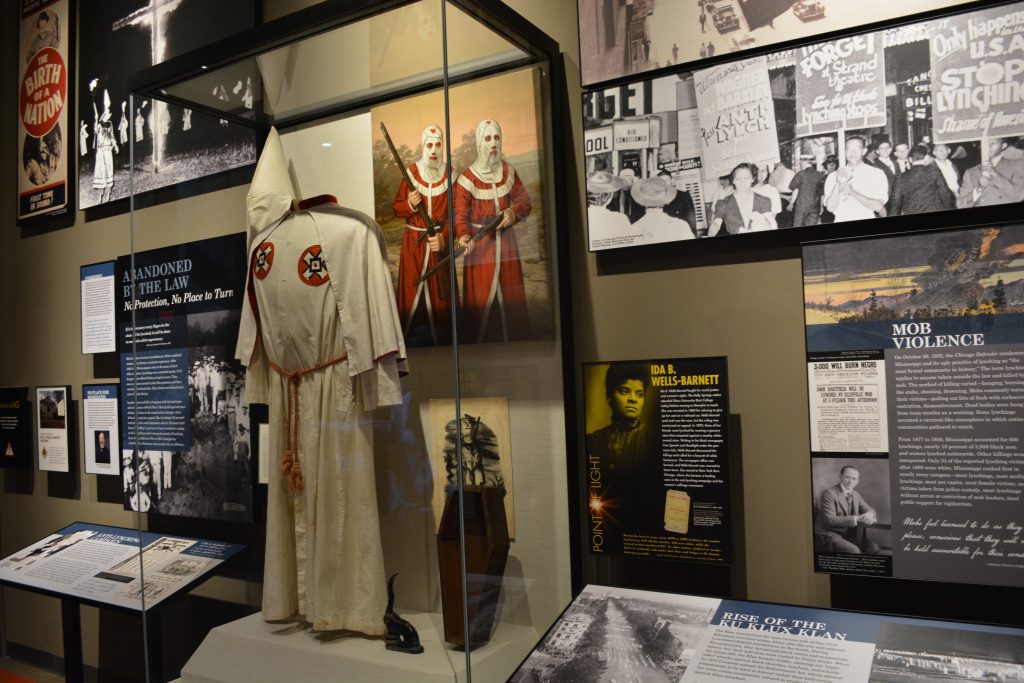Mississippi is celebrating its bicentennial this year, and during its 200 years, the state has seen a lot of change. From the Native Americans living across the state and the Europeans taking their first steps on Mississippi soil, to the beginning of slavery in the United States and the civil rights movement, Mississippi has a vibrant and often tumultuous past. That is what two new museums, the Museum of Mississippi History and the Mississippi Civil Rights Museum, which both open in Jackson on Dec. 9, are trying to share.
Rachel Myers, the director of the Museum of Mississippi History, said she hopes visitors will leave feeling proud of their state but also understanding there is a painful history that needs to be addressed in order to understand why Mississippi is the place it is.
“I hope people find something that is nostalgic and makes them proud of our state and where we’ve been and where we’ve come but also hopefully learn something new, shift their perspective about themselves or their community and the way that they live in this state, as well,” Myers said.
 She said that combined with the new civil rights museum in Jackson, the organizations have an opportunity to spread a new sense of the state.
She said that combined with the new civil rights museum in Jackson, the organizations have an opportunity to spread a new sense of the state.
The director of the Mississippi Civil Rights Museum, Pamela Junior, said that while many of the events that are covered in the museum may make people uncomfortable, it is important for visitors to know about the history of the state they are in.
“We want people to see Mississippi in this light and then to be able to come out with emphasis on changing their lives and doing better and making this state the best state that it can be,” Junior said.
She said understanding Mississippi history means telling the truth and being authentic.
Throughout the two museums, guests will experience stories from different Mississippians dating back thousands of years, using galleries, interactive exhibits and up to 1,500 artifacts.
The Museum of Mississippi History showcases a well-preserved 500-year-old 25-foot dug out canoe in its First Peoples exhibit.
“The gallery really showcases our fantastic archeology collection and really interprets the first peoples of Mississippi and what they wanted,” Myers said. “It really helps us to connect to people that lived thousands of years ago.”
Each gallery is paired with a featured called “voices” that audibly tells personal stories of Mississippians who were living during that particular time period, using touchscreen technology.
“These are a way that we are really able to showcase the collection of the state department of archives and history,” Myers said. “We’ve got plenty of government records and diaries and papers, so these are all first-person accounts, narrative by some contemporary people but in the own voices of people who lived here in Mississippi at the time.”
The Mississippi History tour also includes coverage of the cotton economy, slavery and the Civil War.
 Before leaving the museum, visitors are asked to leave a recording, telling their own unique stories about Mississippi. Myers said this will not only help to document authentic stories, but it will also give visitors a sense of ownership over the museum, as if they are a part of the telling of the story to the next guests who tour the museum.
Before leaving the museum, visitors are asked to leave a recording, telling their own unique stories about Mississippi. Myers said this will not only help to document authentic stories, but it will also give visitors a sense of ownership over the museum, as if they are a part of the telling of the story to the next guests who tour the museum.
“Yes, we have 20,000 square feet of exhibition here, and we’ve really tried to include a diverse range of stories, but we might have missed some,” Myers said. “If someone comes and says ‘I really want to tell the story of my grandmothers people and how they came to Mississippi,’ we have a way to record them and elevate those stories here in the state.”
She said it is important for a museum that focuses on the history of a state and its people to tell a diverse set of stories that represent all walks of life.
“It’s a huge goal of ours not only to be telling stories but that they’re an honest, truthful representation of the rich and complex history of our state,” Myers said.
While the Museum of Mississippi History focuses on the vast history of the state, the Mississippi Civil Rights Museum delves deeper into topics such as slavery, emancipation, Jim Crow laws and the civil rights movement.
The introductory gallery, “Mississippi’s Freedom Struggle,” presents a timeline from the beginning of slavery in the United States in 1619 all the way to the legal end of slavery with the Emancipation Proclamation.
A second gallery covers the years 1864-1941 and tells the story of life under Jim Crow laws and the Black Codes. Guests will hear narrations throughout the gallery, setting the scene of that time period.
“You might hear someone saying ‘Boy, get off that sidewalk,’ and what we’re doing is bringing you to that particular time,” Junior said. “We want you to understand the emotions of the people that were going through this.”
Junior said emotions often run high due to the violent nature of the subject. Signs are displayed stating “The Color Line” and columns separating the gallery list hundreds of lynching victims along with the alleged crime that they committed.
 “I’ve been asked the question, ‘Why are the galleries small?’ Well, we wanted it to be uncomfortable for you,” she said. “We want you to be tight so that you can understand what folks were going through during that time period.”
“I’ve been asked the question, ‘Why are the galleries small?’ Well, we wanted it to be uncomfortable for you,” she said. “We want you to be tight so that you can understand what folks were going through during that time period.”
The Mississippi Civil Rights Museum also covers topics including Emmett Till’s murder, Medgar Evers’ assassination and the Freedom Summer.
The final gallery ends by asking visitors what they plan to do next.
“Gallery 8 is giving you your marching orders,” Junior said. “What are you going to do? You’ve seen all of this; now, how are you going to bring a change in Mississippi?”
Junior said she is proud Mississippi is finally ready to tell its history fully and accurately. She said this is the most authentic museum she’s seen in a long time.
“One hundred and eighty thousand people ought to come through here, and we’re looking forward to being an educational tool to teach our children, talk about citizenship, talk about how to come forward and understand each other’s culture, because if we get that, then we understand ourselves better,” Junior said.






